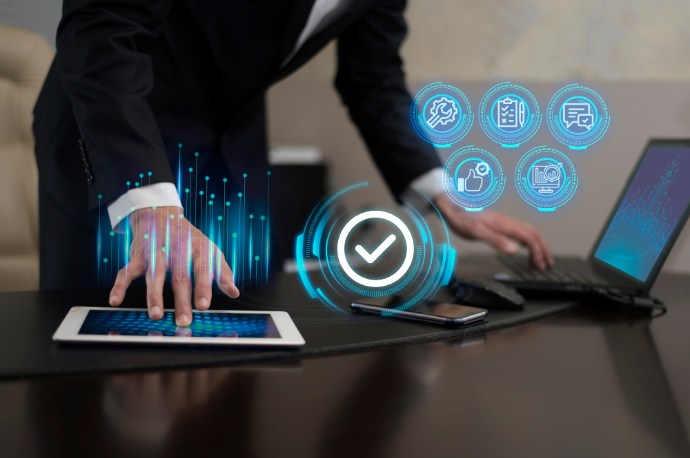Electronic invoicing is set to undergo a major reform in 2026, and it is crucial for businesses to prepare for this transition. In this article, we will explore the upcoming changes, the challenges and solutions, and the role of ERP systems in this transformation.
What is the Electronic Invoicing Reform in 2026 ?
Starting September 1, 2026, new regulations will require all businesses in France, regardless of their industry or size, to switch to electronic invoicing. This means that invoices must be generated, transmitted, and stored electronically, thereby eliminating the need for paper documents.
This reform's main goal is to modernize commercial exchanges by promoting more efficient and secure digital solutions. By abandoning paper invoicing processes, businesses can significantly reduce administrative costs associated with printing, postal mail, and physical document storage. Additionally, transitioning to electronic invoicing allows tax authorities to better monitor commercial transactions, helping to combat tax fraud and enhance financial transparency.

Implications for Businesses
Benefits of Electronic Invoicing
Electronic invoicing offers numerous benefits, including reduced payment times, optimized inventory management, and improved cash flow management. It also enhances transaction traceability and simplifies commercial exchanges.
Potential Challenges and Solutions
The transition to electronic invoicing can present challenges such as adapting internal and external processes, training staff, and ensuring compliance with new regulations. To overcome these challenges, it is necessary to invest in suitable technological solutions and train your personnel in the new processes.
ERP as the Cornerstone of the Transition
Integrating Electronic Invoicing into Your ERP
Integrating electronic invoicing into your ERP system is a crucial step to successfully transition to this new invoicing method:
- Process Automation: The ERP system enables the automation of the entire electronic invoicing process, from invoice generation to transmission to clients. Once configured, the ERP can automatically generate invoices based on transactions recorded in the system, saving valuable time for financial teams.
- Regulatory Compliance: ERP solutions like Odoo are designed to comply with current electronic invoicing regulations. By integrating electronic invoicing into your integrated management software, you ensure compliance with legal and tax requirements, reducing the risks of non-compliance and associated penalties.
- Traceability and Security: The ERP provides a high level of traceability and security for invoicing data. By storing all information in a centralized and secure system, you reduce the risks of loss or unauthorized disclosure of sensitive data, enhancing the trust of clients and business partners.

Best Practices with Odoo and Other ERP Systems
Examples of best practices with ERP systems like Odoo demonstrate how you can successfully transition to electronic invoicing and fully leverage its benefits. Here are some concrete examples:
- Customization of invoicing templates: Odoo's customization features allow for the creation of invoicing templates tailored to specific needs. Through this customization, you can include personalized information on invoices such as company logos, payment terms, and customized messages, enhancing brand image and improving communication with clients.
- Tracking payments and payment delays: Odoo's payment tracking tools can be utilized to closely monitor client payments and identify potential payment delays. By automating this process within Odoo, you can send automatic payment reminders to tardy clients, helping to reduce payment delays and improve cash flow management.
- Integration with other ERP modules: Electronic invoicing can be integrated with other ERP modules such as inventory management and accounting. Through this integration, invoicing data is automatically synchronized with other business processes, ensuring consistency and accuracy of data across all levels of the company.
- Online document signing (quotes or other commercial documents): Odoo Online document signing (quotes or other commercial documents): Odoo also enables electronic signing of various commercial documents such as quotes, contracts, and purchase orders. This electronic signature feature simplifies the approval and authentication process of documents, eliminating the need for printing, manual signing, and scanning of documents. Electronic signatures ensure the legal validity of documents while speeding up transactions and reducing processing times.
CONCLUSION
The electronic invoicing reform in 2026 represents a significant change, but with proper planning and leveraging the functionalities of their ERP systems, businesses can successfully navigate this transition. It is never too early to prepare for this new digital environment and ensure the longevity of your company.
Innovate in documentation management with Captivea
Captivea, en tant que leader mondial de la mise en œuvre d'Odoo, est le meilleur partenaire Odoo que vous puissiez choisir !
Don't hesitate to contact us!